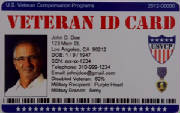|
|
|
|
|
|
Tips By: Ben Krause Here’s a continuance of my own little story for service connection
for the following: Sleep Apnea secondary to Sinusitis and Allergic Rhinitis. I was denied for
these conditions right after my separation from service, in 2001. A little background. I had a sleep study in service conducted by the Fargo VA. The VA had the records of a sleep study and was notified as such. Yet, during my evaluation, the
VA did not request its own files and subsequently denied my condition. I had brief episodes of apnea but
did not require a machine. They also denied service connection for the other conditions despite at
least 12 instances within my service records requiring treatment. The effects of sinusitis were later
confirmed in 2009 via an MRI as were the polyps from allergic rhinitis. The next year I was given a CPAP machine. Rubber, meet Road. In 2010, I put the whole claim together with a little documentation help
from law school and “The Little Book on Legal Writing.” I called the Fargo VA for the actual sleep study from 1998. While on the phone, the FOIA guy at the VA faxed the records to me after a little
convincing (that was the morning of my recent VA examination – don’t wait to the
last second like I did). The records verified my apnea. I was also able to find Congressional Reports
about the conditions of the dormitories we lived in while at tech school – there were issues
of asbestos and leaking sewage along with outdated HVAC systems blowing particles around. I
immediately came down with sinusitis and pneumonia after arrival. I included this documentation
in the event that I come down with certain cancers down the road. Armed with the report, my medical records and a typed
summary, I went to the exam. The first appointment was with an Ear Nose and Throat doctor. He said the VA already
conceded service connection but he needed to find out how many episodes I have every year. I handed him
my documentation. While he did not read over the documentation in full, he most likely
referred to it after the meeting while filling out his exam notes. This is key, especially if the examiner
did not take good notes while in the meeting or forgot some key point that you mention. The summary you
hand him may be the difference between a 10 or 30 percent. My second evaluation was for sleep apnea. I showed the doctor my current diagnosis
along with the former diagnosis while I was in service. She took the time to read over my summary,
which explained how the VA missed my earlier diagnosis. Since I had the old sleep study exam with me, she was
able to clearly tell that I had sleep apnea while in service. Because of the way my documentation
was set out, she told me on the spot that she was going to tell the VA I had sleep apnea in 1998. This could result in a decision
for retroactive pay if I can prove VA committed a Clear and Unmistakable Error during their
2001 denial. Tip
By: Joe If
something develops, take a picture with a camera or a phone with a camera. Show it to the examiner and send in a hard copy of the photo large and gruesome enough for
the examiner to clearly see it. Hopefully before lunch. For something like sleep apnea, make digital recording of how you sleep. Edit
the recording to highlight the problem as well as sending in the unedited video and audio.
Tip By: Patrick When you visit a civilian medical institution ask them to fax a copy to your VAMC. They will then digitize them and they are added to your permanent VA medical file. |
|
|
Submit A Compensation Tip
|
|
|
|

